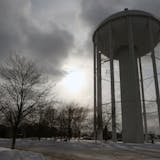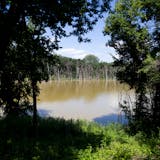Here come the horn players. Every Tuesday night, they negotiate the labyrinthine hallways leading to Jazz Central in the funky basement of a Minneapolis office building, lugging their sheathed instruments and fat stacks of heavily notated music charts.
Big bands have been a steadfast component of the Twin Cities scene for decades. Fans in thrall to the vintage sounds of the 1930s and '40s can get their fix at venues such as the Cinema Ballroom in St. Paul and the Bloomington Event Center, where novices can get a swing dance lesson before sharing the floor with veteran pivoters.
But at the same time, there has been a dramatic surge in original music for big bands that has invigorated players and listeners.
"The scene is better now than it was before — maybe better than it ever was," said veteran trombonist Pete Enblom.
The Twin Cities area sits among a plethora of music schools with thriving programs for big-band scholarship, especially the University of Minnesota and University of Wisconsin-Eau Claire. The influx of young talent — who'd rather hone their chops on difficult new charts than on classics from a bygone era — has, in turn, inspired older musicians.
"Not everybody is making a ton of money," said Enblom, "but there is so much energy coming from these younger cats. I can come down, develop some camaraderie and learn some things. And nobody is making you put on a funny hat and play 'In the Mood.' "
Jerry Swanberg, who has tracked the music for two decades as host of KBEM radio's "Big Band Scene," counts 47 big bands that are relatively active in the area, including college ensembles. In an average month, there are 32 events at 19 venues, performed by 27 groups.
An appetite for new work
A key catalyst is Jazz Central, co-founded nine years ago by musician Mac Santiago as a noncommercial (and now officially nonprofit) nook for adventurous performance and musical education.


